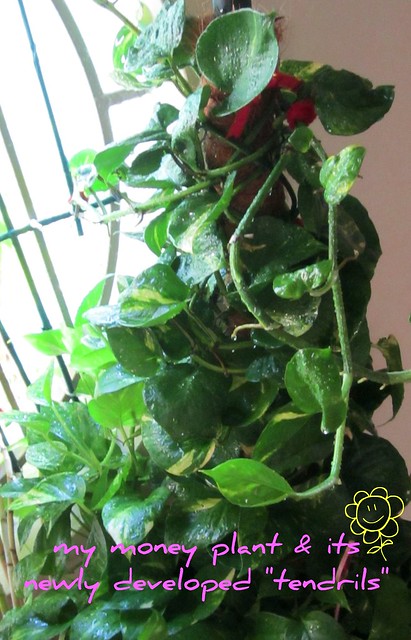Hi folks,
I am a plant lover who picked up gardening as a my hobby during these recent years.
Unfortunately, keeping indoor plants isn't encouraged for us according to my taiwanese geomencer. Becox I'm lacking in terms of the earth element & keeping plants, which apparently promotes the wood element is going to "kill" me off. Or perhaps, according to my own interpretation, cause me troubles in one way or another while having plants under the same roof.
As such, I had no choice but to keep my plants outside the flat even though my living room has very strong afternoon sun that is good for plants that require lot's of sunlight.
But, what's disappointing on the exterior of my flat is that there isn't a huge catchment area for sunlight. There is only 1 miserable hole with a diameter of 60cm or slightly more for sunlight to filter through.
As such, I could only place 3 miserable potted plants which I had nicknamed as
my "Tree" Musketeers & call that location my plant sanctuary.

It might come across as exaggerating to call it a plant sanctuary with jux 3 potted plants. However, I wish to share that these 3 potted plants has imparted a great joy of gardening since the day I acquired them. As such, calling it a plant sanctuary is definitely deserving.
The first pot of plant was an evergreen creeper which is commonly known as the money plant.
The one problem that I faced with this money plant is that the leaves that come under direct sunlight would have brownish burnt marks on them. And the section that doesn't receive any sunlight would see its leaves & the youngest leaf growing at the end of a "tendril" turning yellow.
Well, it pains me a great deal when I see such things happening. When I consulted a 70 year old granny whose a great gardener near our home, she told me repot the money plant & replace the soil because she claimed that money plants are the fussiest species when it comes to using the correct type of soil.
When I brought down a sample of my money plant's soil, I was surprised when she told me that the soil was giving the plant problem as it had a very strong stench of urea to it and is definitely not suitable for the plant as they wouldn't thrive with it.
Did I take her advice?
Even though I believe in every single thing that she has said about my money plant, I didn't implement her recommendations as there were just too much work. And if I were to repot & replace the soil, I'm afraid that it'll end up in a tragic mess. How am I going to cope with recoiling the creeper plant around the pot & the stick which was placed at the centre of the pot? i.e. without hurting its roots & the plant.
My current strategy:
When I see a section of the soil in the pot "balding", I'll hunt around for nice, healthy money plants, buy them & repot them into my existing pot of money plant. That's a short cut & I'm keeping my fingers crossed that it works.
The section of the pot that is "balding" is normally the area that doesn't receive any sunlight at all. Poor plant!
Lately, I saw a tendril of money plant making its way uo the wall. What I didn't quite understand is that that tendril didn't get any sunlight apart from lighting from the flourescent light. But why is it thriving so well?
I'm feeling so boggled after such observation.
